Widening the spectrum of what wine can be
“Shaping our wines is like sculpting: you start with a rock and you chisel out the sculpture,” Martin Nittnaus, 34, states confidently. The arts are never far away when you speak to winemakers Anita and Hans Nittnaus’s oldest son. Just like his father, who dreamt of becoming a musician, Martin never thought of a life in wine. He went to university to study English literature and philosophy. But blood is thicker than water, and this year marks his sixth vintage working plots his father gave to him and his brother, Andreas (Andi), 31.
The Nittnaus estate is located in Gols, a small and by now iconic town in Burgenland, Austria, edging Hungary. Here the land slopes gently towards Lake Neusiedl. The massive, shallow lake essentially makes viticulture possible here, moderating a harsh continental climate. The town is marked by a virtually uninterrupted ribbon of low-slung, pastel-colored houses lining the main street, providing a welcome contrast to the grand buildings of the nearby capital, Vienna. Like many houses on the street, the Nittnauses’ front door gives way to a narrow, long courtyard. The door is unlocked, there is a small-town atmosphere of trust and safety.
The Nittnaus winery dates to 1684, but it was the grandparents of Martin and Andi who moved to the current location, a former farm, set up as a longhouse wrapped around a courtyard. Behind the living quarters, there is a tasting room and a former stable that serves as a gallery and a concert venue. At the time of our conversation, a Romanian artist was showcasing an exhibit – painted in wine. A few weeks before, Beethoven’s music had filled the space. And from time to time, the family band performs: dad on the keyboard and Andi on drums. Martin used to play the guitar. It’s a perfect grounding point for the family: a full-time home for Hans and Anita, as well as Andi, who recently returned from Copenhagen, where he earned a master’s degree in oenology, while Martin divides his time between Vienna and Weiden am See, one town over.
Behind the concert hall, the winery itself starts: a sprawling chain of spaces straddling the rear of the courtyard before looping back towards the street. Here the grapes are macerated, pressed, and fermented, and the wines aged in big stainless steel tanks, oak barrels, and, more recently, amphorae. The last room is a reception space, with weathered beams providing a rustic touch. In the windowsills, small piles of slate from the Priorat, Loire, Burgundy, and other regions reveal a passion for the soil, which is the basis for the Nittnaus’ remarkably sculpted wines.
Last year, a group of nine vintners in Gols — including the Nittnauses — working under the name Pannobile, celebrated a landmark anniversary. Over the last quarter century, they have pushed themselves and their region to the forefront of Austrian winemaking through a collective shift to biodynamic farming and low-intervention winemaking.
Martin Nittnaus
The name Pannobile, sprouted from the creative brain of Hans Nittnaus, basically means noble wine (vino nobile) of Pannonia, the Roman province that largely overlapped with what is now the Hungarian Puszta. Gols, located at the edge of the Puzsta, was originally a Protestant enclave within a predominantly Catholic country. Today it is not religion but work ethic that unites the growers. “It is a form of secular protestantism,” Martin explains. “The monasteries owned a lot of land in the surrounding villages. For the Golsers to own land, they had to be enterpreneurial, take risks, and work hard.”
Times are changing. As Martin says: “My parents worked hard. I try to work smart.” With his inclination towards the artistic and the philosophical, he characterizes this generational shift with a quote from his friend, the philosopher Robert Pfaller: “Excessive restraint is also an excess.”
The reins are being passed to the next generation among other Pannobile producers, too: Renner, Beck, and Gsellmann. In many cases, the shift has been to natural wines. As Martin and Andi, along with their cousin, Lydia, slowly take over, the Nittnaus wines are becoming more and more individual expressions of their own artistry.
When I visit, we tour the premises, then we sit down in the tasting room, sculpture in a corner. Martin cracks open a bottle of his Manila Grüner Veltliner 2017. “Grüner Veltliner is a grape I like to experiment with,” he says. “It’s Austria’s quintessential white wine grape, but it’s caged in its own stereotype: quaffable and peppery. I wanted to play with it using reduction.” Reductive winemaking minimizes a wine’s exposure to oxygen. Andi continues: “Reduction is often seen as a fault, but in France you also have good reduction. We draw our inspiration from wineries like Coche-Dury, La Grange aux Belles, and Domaine des Vignes des Maynes.”
For the Manila, 50 percent of the handpicked, destemmed grapes were macerated on the skins for nearly two weeks in a steel tank with a floatable lid. This means that even when the tank isn’t completely full, it can still be closed off to prevent oxidation. Before spontaneous fermentation was completed, the grapes were pressed. Half the young wine was aged on the lees in used 500-liter barrels and half in steel tank. The other 50 percent of the grapes were fermented and aged in amphorae. The blend of the two is a far cry from traditional Grüner. The extraction from the grapes’ somewhat thicker skins gives it structure. The fruity acidity, reminiscent of yellow apple and peach, is rounded by silkiness from time on the lees. And the reduction? “The natural sulfur compounds that develop in a reductive environment can give rise to recognizable markers such as popcorn, struck match and roasted sesame, and sometimes even a waft of rotten eggs – or more temptingly – of minerality,” Andi explains. These markers usually disappear after a good swirl, while the chalky minerality remains.
Next up is Elektra, Martin’s second avant garde Grüner Veltliner, from 45-year-old vines — a wholly different beast. This wine hasn’t seen any skin contact. The grapes are pressed gently to extract only soft tannins. The wine isn’t racked, but it does undergo malolactic fermentation before it’s aged for 10 months in used barrels. The result is a vibrant, electric wine with higher acidity and a touch of saltiness. “In Greek mythology, Elektra is a strong-willed lady. That is how I see this wine,” Martin says. Andi teases: “I think it refers to Carmen Electra,” referring to the American model and actress. The reality is that Martin, commercially savvy, chooses catchy names that resonate internationally.
Andi has been making his own wines for the past two years. Tochter is not only the nickname of a vineyard, it is also the name of Andi’s first wine, which he carries into the tasting room in two small carafes straight from the barrel. Andi is into “light wines” as he says. He picks his grapes as early as possible. Inspired by the work of Istrian winery Roxanich, Andi made this wine in a reductive environment using carbonic maceration. After putting whole grape clusters in the fermentation vat, the CO2 developed as a result of intercellular fermentation pushes out the oxygen. After a quick ferment with full skin contact, the wine is left to age. With only 10 percent alcohol, this Grüner Veltliner is an intensely fresh and citrusy wine with a slightly granular texture and those hints of popcorn and sesame.
Unlike his brother Martin, Andi received a classic vintner’s education. After earning a bachelor’s degree in Life Sciences from the University of Vienna, he continued his studies in Montpellier and Lisbon. He went on to work in Portugal and later Tasmania to learn from biodynamic vintner Stefano Ljublana. He recently completed his master’s thesis on the effect of water stress on the hybrid Solaris grape at the University of Copenhagen. If Martin leans more towards the artistic side, Andi is the scientist who doesn’t tire of explaining all the technical details, for example his experiment with Blaufränkisch.
Here again he picked the grapes very early; the seeds were still green. To avoid extracting too many bitter notes, Andi spent two whole days deseeding a third of his, admittedly, small harvest. The unseeded grapes were vinified separately. The seeds were sun-dried, accelerating lignification, a process involving the degradation of raw tannins that are responsible for bitter flavors. Another third of the grapes was vinified using carbonic maceration for fruitiness, and the final third was crushed and fermented with the stems to which the dried seeds were added for tannins. As the wine with the dried seeds was massively tannic, the three wines were blended at a ratio of roughly 45 – 45 – 10. The final result was cloudy, full of sour dark cherries and floral notes, with a slight astringency. Andi made just 70 half bottles, which he drinks with friends from time to time. Although the wine may be a bit angular, it is clear something is brewing in his inquisitive approach. He reveals his true inner scientist when he says: “Unfortunately I didn’t have a pipless control group to further investigate the impact of my experiment.”
Although Hans and Anita still own the winery, it seems obvious that the first steps toward transition have been taken. Andi is back home again, Hans is slowly starting to appreciate the reductive styles. Despite their passion for experimentation, both Martin and Andi stress that they will not fully break with tradition. “Our dad’s fantastic single vineyard Blaufränkisch wines and his Comondor cuvée will certainly stay.”
The biggest difference now is in the use of SO2. Hans takes fewer risks and adds it more liberally. Martin and Andi find that it gives a certain hardness to the wine. They pursue “zero/zero” wines. Nonetheless, when we end our tasting with a fantastic wine made by Hans, Martin says admiringly: “This one is like a Mozart symphony.” It is clearly meant as a compliment, but it also demonstrates a generational shift. If Hans’ wines are Mozart symphonies, Andi and Martin’s wines could be songs by Nas, Martin’s favorite rapper.
“Progressive winemakers gradually become less guided by wine-school teaching and dogma,” notes Martin. “Techniques unthinkable 20 years ago are now fully accepted as winemaking tools. The old and lazy excuses ‘we always did it this way’ are disappearing. Cloudy wines and aromas beyond primary fruit no longer require explanation or justification. My brother and I see ourselves as spearheads in the Neusiedlersee area, always trying new methods to stay relevant. We are widening the spectrum of what wine can be.” With ever more vintners shifting towards biodynamic farming and low intervention winemaking, the young Nittnauses are securing the leading role their family winery plays, alongside the other Pannobile wineries, in the Austrian wine scene.
Hans & Anita Nittnaus
Untere Hauptstrasse 49
7122 Gols
Austria
This article has been published in Trink magazine, issue 2.
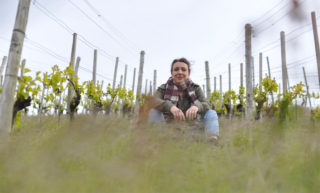
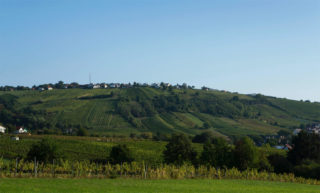
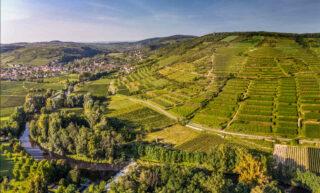
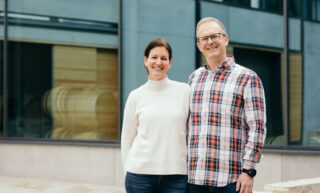

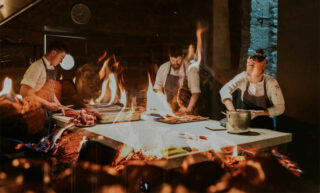


Comments